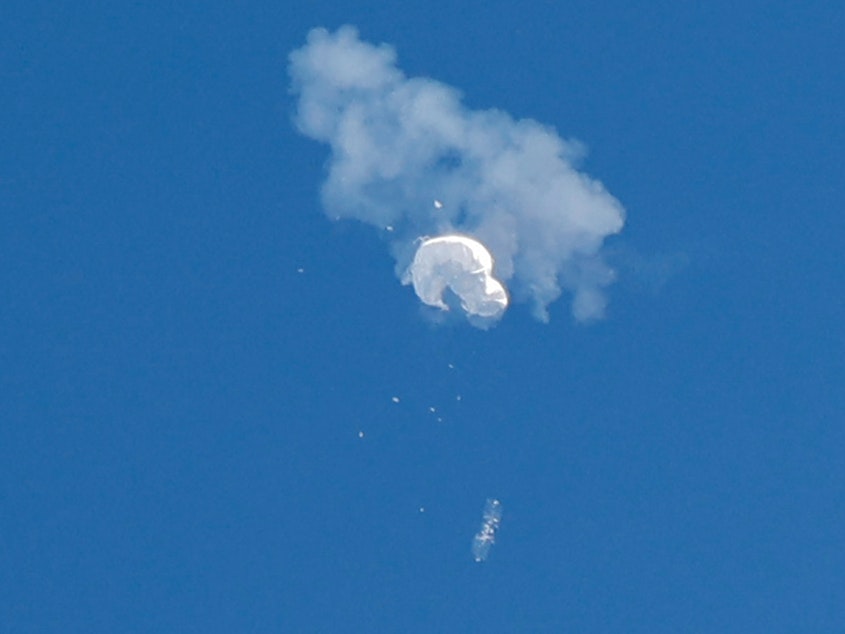This wasn't the first Chinese balloon over the U.S. Why were the others ignored?

Given the hullabaloo over the Chinese surveillance balloon, you'd think something like this never happened before.
But it has. At least four other times in recent years.
According to a senior U.S. defense official, Chinese balloons crossed over the U.S. at least three times during the Trump administration and at least one other time earlier in the Biden administration.
However, these previous air incursions were brief and judged to be insignificant. The reports apparently didn't make their way up the military chain of command, let alone reach the White House.
"I don't ever recall somebody coming into my office or reading anything that the Chinese had a surveillance balloon above the United States," Mark Esper, who served as a defense secretary during the Trump administration, told CNN.
Sponsored
Trump has called the reports "fake disinformation" on social media.
Rep. Michael Waltz, a Florida Republican, said defense officials identified the locations of the previous balloon incursions when briefing lawmakers over the weekend. The Washington Post reported the locations included Texas, Florida, Hawaii and Guam.
In all cases, the overflights were brief and not considered important, according to defense officials, who say that they monitor many balloon flights, which are typically non-military in nature.
A much different incident this time
The episode last week was very different because of how long the balloon was over the U.S., and because it was traveling near sensitive military sites.
Sponsored
U.S. officials say it's still not clear what the Chinese motive was. The U.S. believes Chinese satellites have acquired the same, or very similar information, through the use of satellites.
China has been using balloons to surveil numerous other countries in recent years, which is somewhat puzzling to U.S. officials.
China's massive espionage program is first rate. And this balloon operation over the U.S. was considered clumsy and clunky.
The Chinese had to know that a large balloon — visible to civilians with the naked eye — would be detected. That raises the possibility that one of the Chinese goals was to see how the U.S. would react to this kind of provocation.
The clear answer is that it sparked a partisan feud in the U.S. Republicans are attacking President Biden for not shooting down the balloon sooner, while most Democrats are defending the president for taking a measured approach.
Sponsored
The episode also ratcheted up U.S.-China tensions and led Secretary of State Antony Blinken to cancel a trip this week to China where he planned to meet senior leaders in an effort to reduce friction.
Shot down off the South Carolina coast
A U.S. Air Force jet fired a single missile to shoot down the balloon just off the coast of South Carolina on Saturday afternoon. The military said it waited until the balloon was no longer over the U.S. in order to remove the possibility that falling debris could harm people.
China, which has claimed this was a weather balloon that veered off course, criticized the U.S. response.
"The U.S. use of force is a clear overreaction and a serious violation of international practice," China's Foreign Ministry said in a statement.
Sponsored
Divers from the U.S. Navy are attempting to recover key equipment. They are working in waters that are less than 50 feet deep, which increases the likelihood of finding key equipment like sensors or other monitoring devices.
Still, the debris is spread over several miles, and even if the Chinese surveillance equipment is found, its not clear what condition it's in.
It's also unclear whether either the U.S. or China gained any significant information from this incident.
U.S. officials, however, feel they've already learned some lessons by closely tracking the balloon for a week before shooting it down.
While the U.S. has not divulged details, the U.S. did try to electronically jam the Chinese equipment to keep it from transmitting back to China. Security was also increased at sensitive military sites in an attempt to shield the balloon from gathering material.
Sponsored
If Navy divers recover the Chinese equipment, this could provide insight into what the Chinese were looking for, what information the balloon actually obtained, and if the U.S. measures on the ground effectively countered the surveillance.
Greg Myre is an NPR national security correspondent. Follow him @gregmyre1. [Copyright 2023 NPR]
